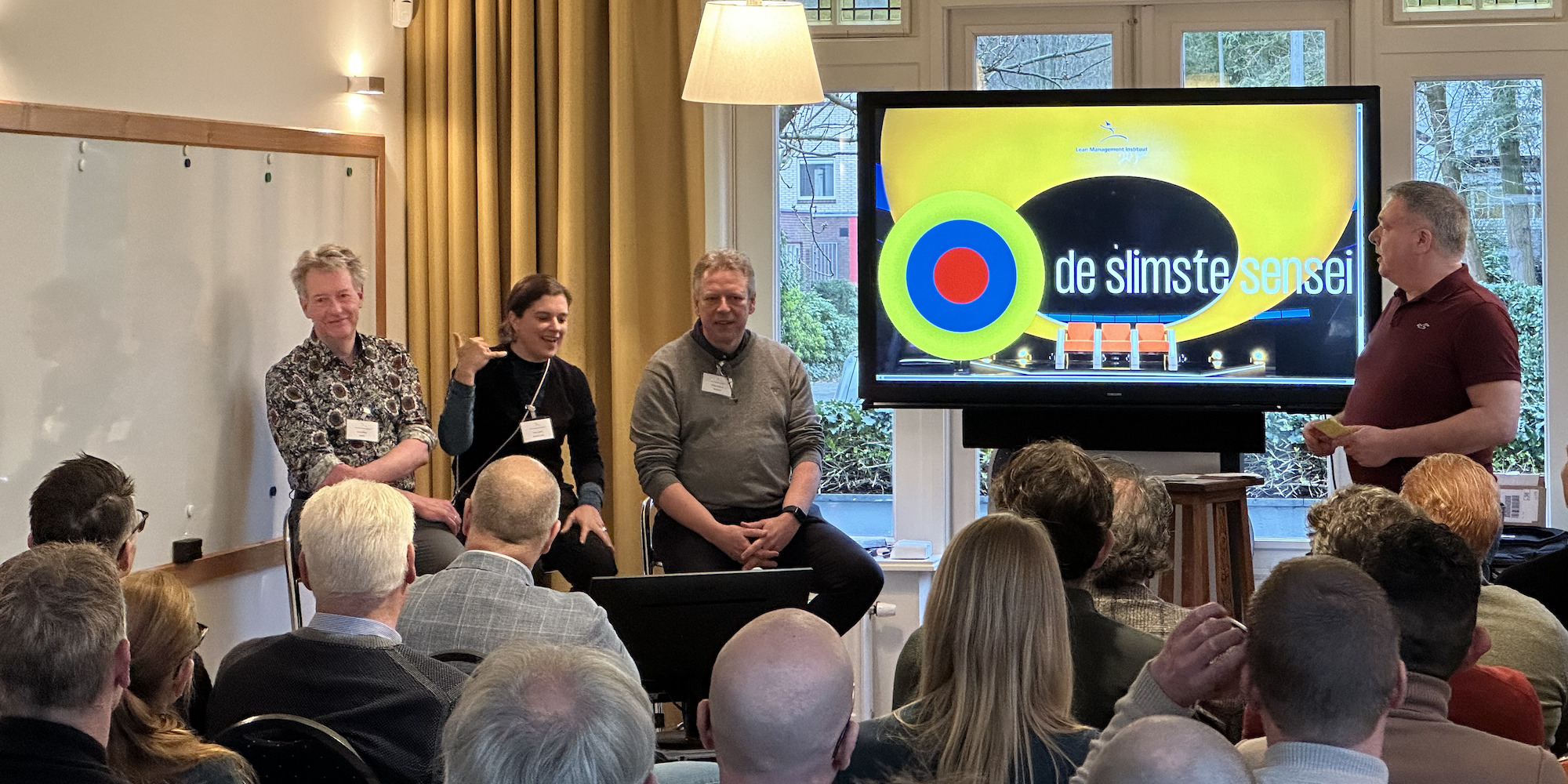
Lean in an asset management company
CASE STUDY – The story of improvement at China-based asset management company Hengbaishi is a great reminder of the universality of lean principles.
Words: Yin Yaqi
Can an approach like Lean, derived from manufacturing, be successfully applied to the financial industry? The story of Shenzhen Qianhai Hengbaishi Asset Management Co., Ltd. (Hengbaishi) provides a resounding "yes." Through practical experience, we’ve seen lean significantly improve our efficiency and customer satisfaction. Let me tell you how.
THE CHALLENGES WE FACED
The financial industry is ever-changing, filled with unknowns and uncertainties in both customer demand and the market environment. At Hengbaishi, we help clients achieve asset allocation and appreciation under controllable risks. Our services include professional asset allocation recommendations, customized plans based on client needs, and adjustments to these plans based on market fluctuations.
Recently, however, we faced growing challenges. On one side, artificial intelligence began disrupting traditional financial services by offering personalized solutions via algorithms, impacting the sales of standardized products. On the other, stricter regulations and shifting asset structures in China further complicated operations.
WHAT LEAN BROUGHT US
Previously, we operated like a traditional financial firm. Problems often lagged behind in resolution. For example, changes in client demands were often delayed by a week before reaching sales managers. Asset allocation plans were created from our perspective, but when presented to clients, they frequently requested changes that delayed implementation. Internally, team dissatisfaction with performance assessments led to adjustments in every quarter.
When we embraced lean principles, we began focusing on minimizing waste and maximizing customer value. Lean tools like standardized work and value stream mapping guided us toward improvement. Over four years, we achieved remarkable results, and in this article I’d like to share three examples that stand out.
EXAMPLE 1: STANDARDIZING THE MARKETING PROCESS
In the past, marketing followed a traditional approach. Morning meetings reviewed work plans, evening meetings summarized daily progress, and weekly meetings coordinated cross-departmental efforts. Information transfer, particularly between product and sales managers, was inefficient (communication was often verbal), leading to time wastage and misaligned priorities. Meetings often consumed valuable time that could be better spent visiting clients.
By implementing lean tools, we streamlined the marketing process into nine standardized steps, each with a specific name and corresponding table to document progress. For instance, in Step 1A, sales managers record client information, such as investment preferences and risk tolerance, while in Step 2B, product managers design tailored asset allocation plans based on this standardized input.
Automation and clarity eliminated excessive meetings, reducing waste. Our team, originally eight members managing $60 million in assets, now has only three partners who efficiently handle $120 million. Additionally, the time once spent on meetings is now dedicated to client visits, significantly improving relationships.

EXAMPLE 2: IMPROVING MEMBER CENTER ACTIVITIES
In partnership with the activity design department and the sales team, our member center organizes activities to foster stronger client relationships. Previously, activity goals prioritized sales team needs, resulting in poor cross-departmental collaboration and low customer satisfaction (under 50%). Dissatisfied clients even left due to poorly organized events.
We restructured this process around two principles: creating value for clients and reducing repetitive tasks. Activities were broken into standardized modules (for example themes, venue selection, materials), which were stored in an activity plan library for easy retrieval and use. These modules are constantly adjusted based on client feedback.
The results of this improvement were transformative, with collaboration improving across departments and customer satisfaction with activities increased by 45% (positive ratings consistently exceed 90%).

EXAMPLE 3: LEAN PRODUCT DEVELOPMENT FOR ASSET ALLOCATION PLANS
Asset allocation plans often faced delays and rework due to a misalignment of goals – with clients seeking stable education funds for their kids and our internal models prioritizing high returns. A Lean Product Development course led by Professor Yu-Hsiu Hung, which we attended last year in June, inspired us to focus on client needs and involve sales managers in plan design.
This shift yielded dramatic improvements, too. Plan delivery time dropped from 5 hours to 2.5 hours; rework frequency fell from 4 times per plan to 0.7; and customer satisfaction rose from 73% to 92%.
THE HUMAN IMPACT OF LEAN
Lean Management is as much about cultural change as it is about operational efficiency. Initially, some employees were skeptical. My favorite example is that of our system engineer Huang Shipeng, who’s responsible for maintaining OA and CRM systems. He used to doubt lean had any relevance to his work, but over time, as standardized communication made his job easier, he too embraced lean tools like process standardization and value stream analysis. It was touching to see!
Lean at Hengbaishi transformed not just processes but mindsets. Our employees have become more organized, collaborative, and invested in continuous improvement.
RESULTS ACHIEVED
Implementing lean at Hengbaishi has delivered exceptional outcomes, which included:
• Sales team size reduced from 8 to 3 while doubling assets managed.
• Asset allocation plan delivery time decreased by 40%.
• Customer churn reduced by 75%.
• Positive feedback for customer activities increased from 45% to 90%.
Our journey demonstrates that manufacturing principles can revolutionize the financial sector, driving efficiency, satisfaction, and long-term success. But there is a catch: lean is not just for managers – it’s for everyone, fostering a culture of continuous improvement.
THE AUTHOR

Read more


FEATURE – In February, our affiliate in the Netherlands turned 20. The President of Lean Management Instituut reflects on this achievement and looks back at these two decades.


INTERVIEW - To really change, an organization must use lean management as a strategic asset rather than just a set of tools. In this interview, Art Byrne talks about rewarding people and the process of transforming companies.


CASE STUDY – Combining the lean and agile methodologies, HP’s site in Barcelona has streamlined and greatly improved its product development. Along the way, they transformed their culture, too.


FEATURE – The impact of humankind on the environment is now beyond dispute. Yet, too little is being done to adapt our business models. This compelling read explains why we need to create prosperity beyond profit.
Read more


COLUMN – Finance is a critical function within a firm. Yet, lean thinking seems to struggle to make progress in this field. Following a workshop with Nick Katko, the author of this article sees an opportunity.


VIDEO - Visualization has an important role to play in creating awareness of the problems and highlighting gaps as a key starting point for improvement, and this Finance Manager does it with dedication.


RESEARCH – What kind of financial results can a SME owner expect from a lean transformation? To find out, the author of this interesting research analyzed the performance of 100 Italian small and medium-sized companies.


VIDEO INTERVIEW - At the Lean IT Summit, we spoke with Amazon Web Services to understand what type of flexible and scalable IT infrastructure allows organizations to be innovative without breaking the bank.

